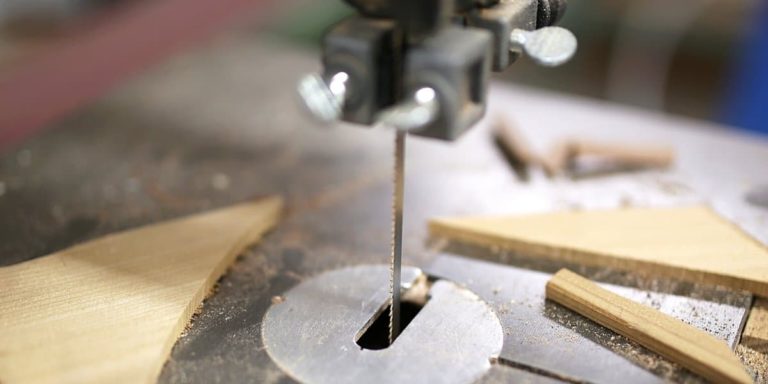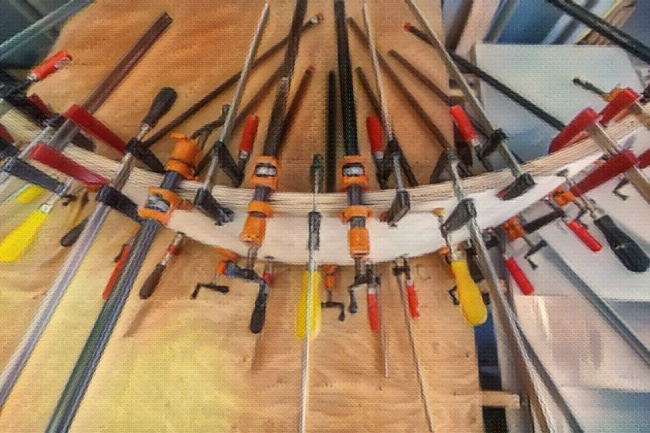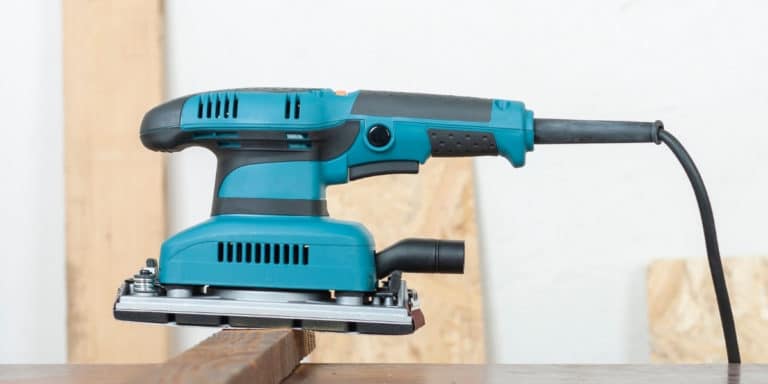Ready, Set, Craft! An Essential Guide to Woodworking Power Tools for Beginners
This post includes affiliate links. If you decide to make a purchase through my link, I might get a small commission for it at no additional cost to you. Thank you for supporting Upcycle This DIY That!
At its core, woodworking is the craft of creating, repairing, or designing items using wood. It encompasses a broad spectrum from carpentry, cabinet making, and joinery to artistic wood carving and woodturning.
There’s a profound satisfaction in creating something tangible, and woodworking provides just that. Whether it’s a rustic dining table or a delicate birdhouse, turning raw materials into a finished product imbues a sense of achievement and self-reliance that few hobbies can match.
The Game-changing Impact of Power Tools on Woodworking
The advent of power tools marked a seismic shift in woodworking. No longer was the craft bound by the constraints of manual labor. Once the sole domain of skilled artisans, complex designs and intricate patterns became achievable by novices and hobbyists alike.
Woodworking power tools have been a game-changer in my DIY endeavors, helping me bring my creative ideas to life with greater precision and efficiency. As a self-taught woodworker, I wanted to share my thoughts on the importance of these fantastic machines.
YOU MAY ALSO BE INTERESTED IN:
Dive Into DIY: Essential Woodworking Tools For Beginners
Unlock Your Crafty Side: Navigating The Basics Of Woodworking Hand Tools
Crafting Dreams From Scratch: Introduction To Woodworking Tools For Beginners
Whether you’re looking to make your own furniture, upcycle old pieces, create DIY home decor, or simply hone your woodworking skills, power tools are essential for achieving the best results possible.
Throughout my journey, I’ve come across various woodworking power tools, each with unique capabilities and benefits. By harnessing their power, I’ve achieved fine cuts, smooth sanding, even planing, and accurate drilling – all within a fraction of the time it would take using traditional hand tools.
The efficiency and ease of use these tools provide allow us to focus more on the creative aspects of our projects.
Powering Up: Introduction to Woodworking Power Tools
Essential Woodworking Power Tools: Your Crafting Companions
I know how important having the right power tools is for a successful project. In this section, I’ll introduce you to the essential woodworking power tools every beginner should have in their arsenal, helping you easily create beautiful pieces.
The Dynamic Table Saw: Cut it Out with Precision
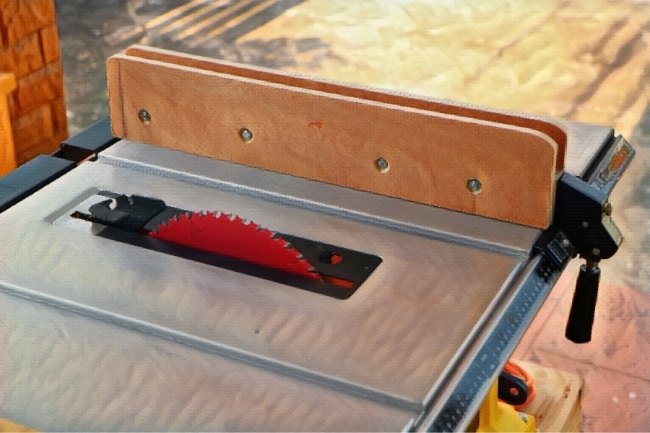
One of the most versatile tools in our workshop is the table saw. This power tool excels at making straight cuts with precision. It can also be adapted for various cuts with jigs and accessories.
Its capabilities are virtually limitless, from ripping wide boards to crafting narrow dados. A quality table saw is a must-have for any woodworking beginner, as it will serve as the foundation for many projects.
There are four primary types of table saws:
Each type of table saw boasts different strengths and is designed for different uses. However, table saws are indispensable for a range of cuts across all types. They excel in making rip cuts (cuts made with the grain) and crosscuts (cuts made against the grain).
A table saw with a miter gauge can also make miter cuts for creating angles. Additionally, table saws can create dadoes and rabbets for joinery with a dado blade set.
The choice of table saw largely depends on specific needs. Portability for on-the-go projects may require a portable saw, while continuous, heavy-duty use may require a cabinet saw.
Projects
A table saw is suitable for a plethora of projects, from constructing furniture to creating intricate wooden artwork. It can help you build bookshelves, cabinets, tables, and more. Its versatility also allows for crafting joints, like the tongue-and-groove or rabbet joints, which are vital in woodworking.
Mastering the table saw requires patience, practice, and a keen understanding of safety procedures. But once you’ve harnessed its capabilities, it becomes a steadfast ally in your woodworking adventures.
The Meticulous Miter Saw: Mastering Angles with Ease
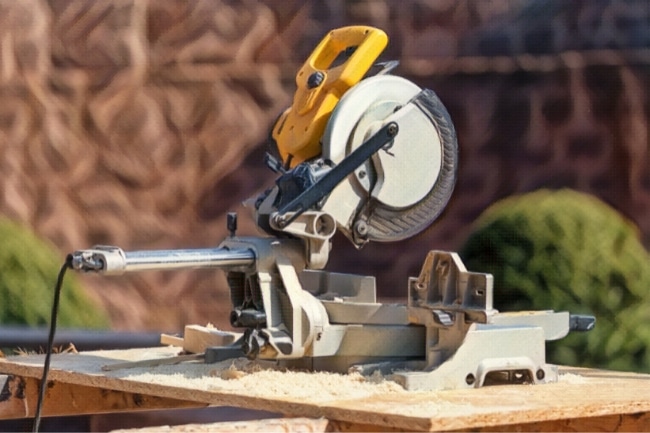
With its distinctive design and powerful cutting capabilities, the miter saw is integral to any well-stocked workshop. Known for its precision and versatility, this saw shines when it comes to making angled cuts.
There are three primary types of miter saws:
Miter saws are specifically designed to excel at making fast and precise angled cuts – miters and crosscuts. From framing to molding, trimming, and frames, a miter saw ensures you can consistently achieve exact angles and lengths.
While each type of miter saw offers unique features, they all provide unmatched precision regarding angled cuts.
Around the World with the Circular Saw: A Detailed Guide
No beginner’s toolbox would be complete without a circular saw. Called a “buzz saw” by some due to its unique sound, this versatile cutting tool is useful for cutting through wood, plywood, and other materials.
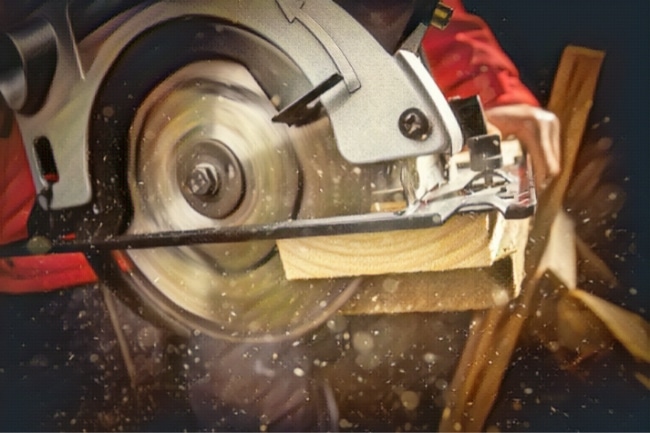
Circular saws, known for their portability and power, are a versatile addition to any toolbox. With their rotating blade and adjustable cutting depth, these robust tools offer flexibility and precision on the go. In my experience, a circular saw is a must-have for any aspiring woodworker.
There are three types of circular saws:
Projects
Circular saws are versatile powerhouses, making them indispensable in many projects. Here are several types of jobs or projects where circular saws truly shine:
Whether it’s a quick trim or a long, straight cut, the circular saw’s strength and adaptability make it a stalwart companion for woodworkers. From crafting furniture to building decks, the circular saw stands out as a powerhouse tool in woodworking.
Jigsaw: Crafting Curves Just Got Easier

With their narrow, reciprocating blade, jigsaws bring a level of intricacy to woodworking that few other power tools can match. Known for their ability to precisely produce curved and straight cuts, they are the go-to tool for detailed work.
There are primarily two types of jigsaws:
Jigsaws excel at a variety of cutting tasks:
The jigsaw is a versatile tool, suitable for various projects, from making intricate patterns in a piece of furniture to cutting ceramic tiles or even metal sheets.
With the right blade, a jigsaw can cut through a range of materials, making it a versatile tool that caters to detailed, precision cutting needs in any woodworking project.
Its relative ease of use makes it a favorite among novice woodworkers, who can use it to gain confidence before moving on to more complex power tools.
Power Drills Uncovered

Finally, no woodworking power tool set would be complete without a reliable drill. The power drill, with its multifunctionality and varying capabilities, stands as one of the most invaluable tools in woodworking. This versatile tool, capable of boring holes, driving screws, and even mixing paint, can truly do more than just punch holes.
Types of Power Drills
Versatility and Multifunctionality
Power drills are notorious for their adaptability. With the plethora of attachments available, the range of tasks they can perform is extensive:
Choosing the Right Drill Bit
The diversity of drill bits is as important as the drill itself. The choice of the bit often dictates the success of the task at hand:
Sanding Down: The Power and Purpose of Sanders in Woodworking
Sanding, a vital component in woodworking, contributes greatly to the aesthetic and functional quality of the final product. With their diverse array and specialized functions, sanders make this task significantly more manageable, effective, and efficient.
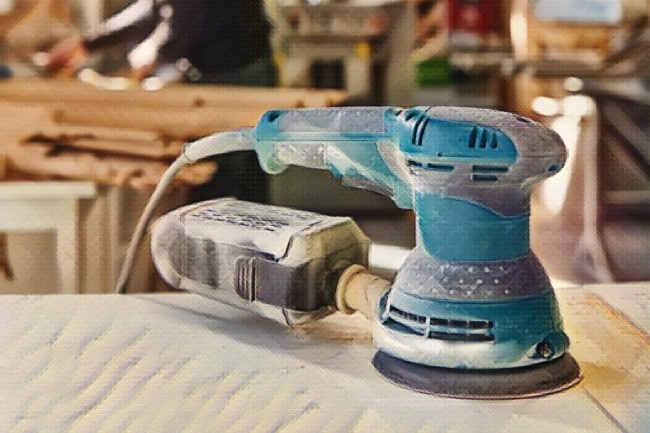
Sanders: Your Key to Smooth Surfaces and Perfect Finishes
Sanders are pivotal in achieving smooth, flawless finishes, essential in woodworking for functional and aesthetic purposes. They remove rough edges, splinters, and imperfections, preparing the wood for finishing treatments like painting or staining.
Different Types of Sanders: Orbital, Belt, and Sheet Sanders
Understanding the type of sanders available is crucial in selecting the right tool for the task:
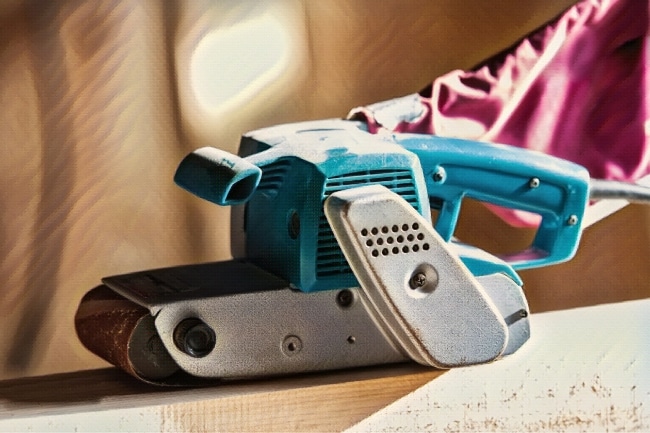
Additional Power Tools: Expanding Your Woodworking Toolkit
Investing in advanced woodworking power tools can make a significant difference in the quality and efficiency of your projects. This section will cover the benefits and features of some advanced power tools, including the bandsaw, planer, router, and lathe.
Band Saws: When and Why You Need Them
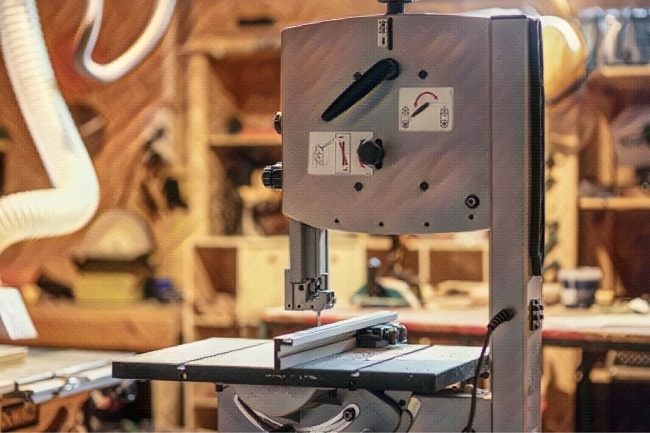
Bandsaws are versatile tools that make precise and intricate cuts in thicker lumber. A quality bandsaw is an essential addition to our workshop as it allows to:
Sizes & Types: Available in benchtop models for smaller workshops and floor-standing models for more extensive needs, band saws are versatile with blades that can be changed to suit the cutting requirement.
Planers and Jointers: Smoothing Out the Rough Edges
A planer is a must-have for anyone serious about woodworking, as it ensures consistent thickness across our workpieces. Some benefits of using a planer in our projects include:
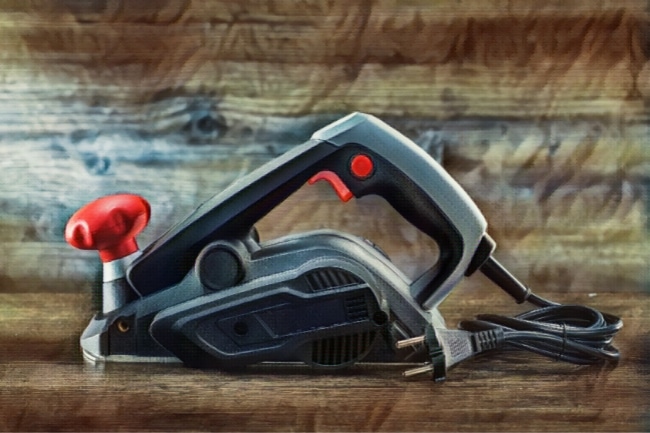
Sizes & Types: From benchtop to industrial-sized machines, planers and jointers come with varying capabilities, accommodating diverse woodworking needs.
The Router: Carving Edges with Finesse

Routers are another versatile power tool invaluable in woodworking endeavors. Some tasks we commonly use routers for include:
Sizes & Types: Available in plunge, fixed-base, and combo kit models, routers offer versatility in performing tasks like shaping, trimming, and cutting grooves.
Lathe
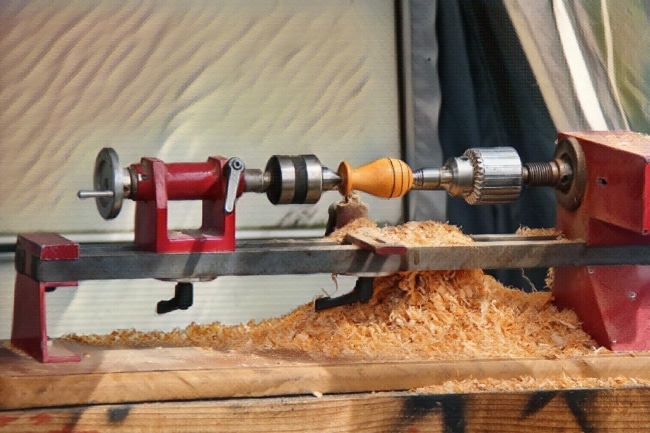
A wood lathe is a tool designed to rotate a piece of wood around a central axis, allowing for the creation of symmetrical designs and precise carvings. It’s fundamental for projects that demand symmetrical elements, combining accuracy with artistic liberty to craft a range of items:
Sizes & Types: Lathes range from mini lathes suitable for small projects like pens and chess pieces to large, industrial lathes for bigger projects like table legs and bowls.
Selecting the Right Power Tools
As mentioned above, choosing the right power tools can make a big difference in the quality and efficiency as well as the completion speed of your projects. This section will cover essential aspects to consider when selecting the best woodworking power tools.
Understanding Tool Specifications
Before purchasing any power tools, it’s crucial to understand their specifications. For example, you should know the difference between corded and cordless power tools.
Cordless power tools offer greater portability and flexibility, while corded tools provide consistent power without worrying about battery life. Cordless tools require at least a set of batteries and a charger which are additional costs. Corded tools, on the other hand, need access to the power supply.
When looking at routers, a simple palm router is ideal for beginners, while professionals prefer more powerful and versatile tools. Similarly, for drills, consider factors such as chuck size, keyed or keyless chuck, and whether you need an impact driver or hammer drill.
Considering the Type of Projects
Think about the projects you plan to undertake and the required power tools. For making furniture or upcycling old pieces, you may need tools such as:
Budgeting and Deals
When buying power tools, it’s essential to balance quality and affordability. Start by creating a realistic budget for your tools, and prioritize tools you’ll use frequently. Keep an eye out for deals, sales, and discounts to help you get the best value for your money.
Working Safely with Power Tools
Woodworking power tools can make your DIY projects easier and more efficient but can also be dangerous if not used properly. This section will cover important aspects of working safely with power tools, including personal protective equipment, proper use, and maintenance.

Personal Protective Equipment
Your safety should be your top priority when working with power tools. It is crucial to wear the correct personal protective equipment (PPE):
Proper Use
Using power tools correctly and safely is essential for a successful project:
Maintenance
Regular maintenance is critical to keeping your power tools in good working condition and reducing the risk of accidents:
Maintaining Your Woodworking Power Tools
Woodworking power tools are essential to any DIY enthusiast’s workshop, helping you create beautiful furniture or decorative items for your home. This section will go over two key aspects of maintaining your woodworking power tools: Cleaning and Storage and Troubleshooting.
Cleaning and Storage
Keep it clean: Regularly cleaning your power tools keeps them in good shape and ensures their efficiency and longevity. Make it a habit to wipe away sawdust and debris after each use. For more thorough cleaning, use a soft brush or compressed air to remove dust from vents and internal components.
Proper storage: Always store your power tools in a dry, climate-controlled environment. Moist and dirty environments can cause hand tools to rust and dull, while damp areas can degrade the electrical components of your power tools. Invest in a toolbox or dedicated storage space to organize and protect your tools.
Troubleshooting
Don’t ignore the signs: Pay attention to changes in your tools’ performance, such as unusual noises, excessive vibration, or reduced power. These can be early indicators of a potential issue that needs attention. Addressing problems early on can prevent more significant damage to your tools and save you money in the long run.
Cool down heated tools: If you notice your power tools getting unusually hot during use, let them cool down before continuing with your work. Overheated tools may cause wear and tear on the electrical components and reduce their lifespan.
Stay sharp: Regularly inspect cutting tools, such as saw blades and drill bits, for signs of wear. Dull or damaged blades can decrease the quality of your work and put unnecessary strain on your power tools. Sharpen or replace worn-out cutting tools as needed.
Remember, maintaining your power tools is essential for ensuring their long-lasting performance and the success of your DIY projects. With proper cleaning, storage, and troubleshooting practices, you can keep your workshop running smoothly and create beautiful handmade pieces for years to come.
Conclusion: Celebrating the Craft
In conclusion, power tools are the linchpins of woodworking, enabling craftsmen to bring their imaginative visions to life with precision and efficiency. They demystify the complexities of woodworking, offering solutions that transform how we carve, join, shape, and finish wood.
From the sheer power of saws to the delicate finesse of sanders, each tool holds the key to a unique realm of possibilities in the crafting process. Embracing these tools is not just about enhancing capabilities; it’s about stepping into a world where the synergy of skill and technology unlocks boundless woodworking potential, allowing both novices and experts to push the boundaries of creation and innovation.
Looking back, the journey through woodworking is one of both joys and challenges. Embrace the learning process, celebrate your accomplishments, and remember that every skilled woodworker was once a beginner.
As you progress, the world of woodworking becomes even more intriguing. Advanced techniques, intricate designs, and larger projects await. The journey of woodworking is perpetual, filled with opportunities for constant learning and creative satisfaction. Forge ahead and keep crafting!
Subscribe To My FREE DIY Newsletter!
Stay in touch and receive things like updates, special offers, new projects, tips, gear reviews, and more. No spam, promise!
By entering your email address, you agree to get an email newsletter from UpcycleThisDIYThat. I’ll respect your privacy, and you can unsubscribe at any time. For more details, review our Privacy Policy.

